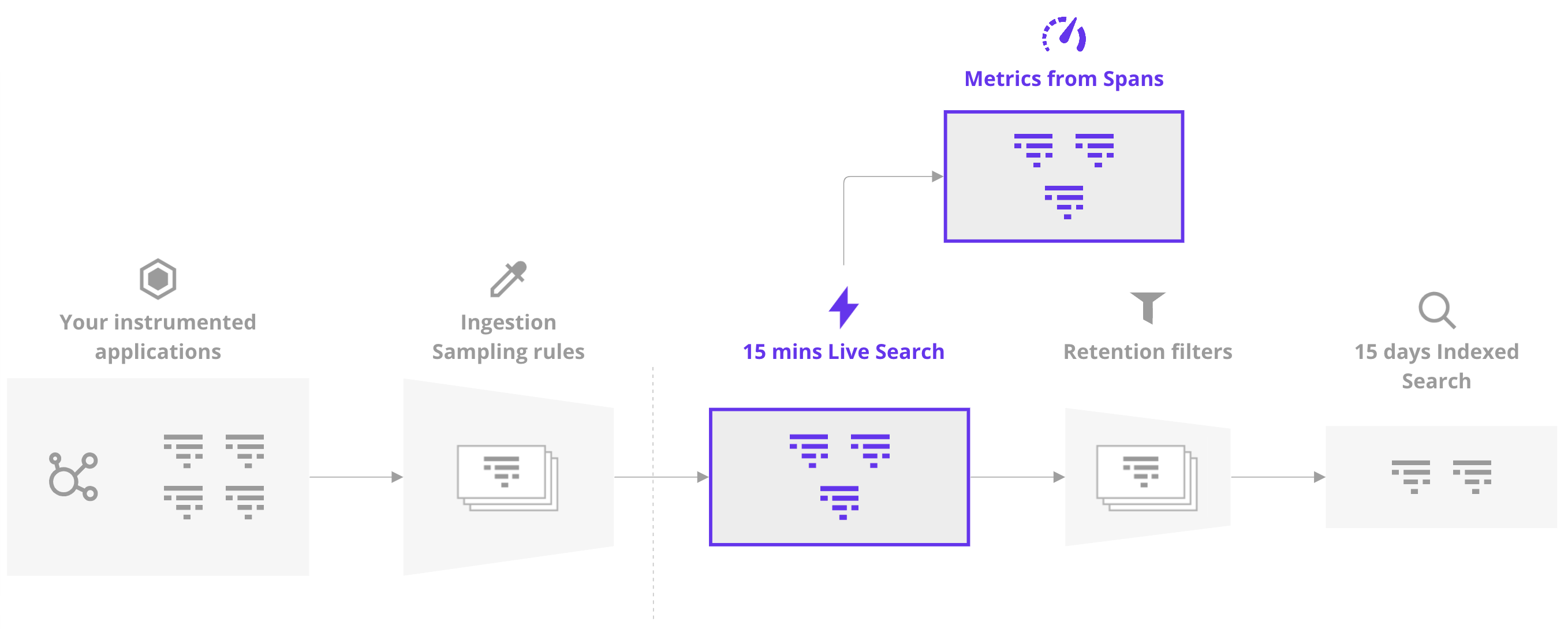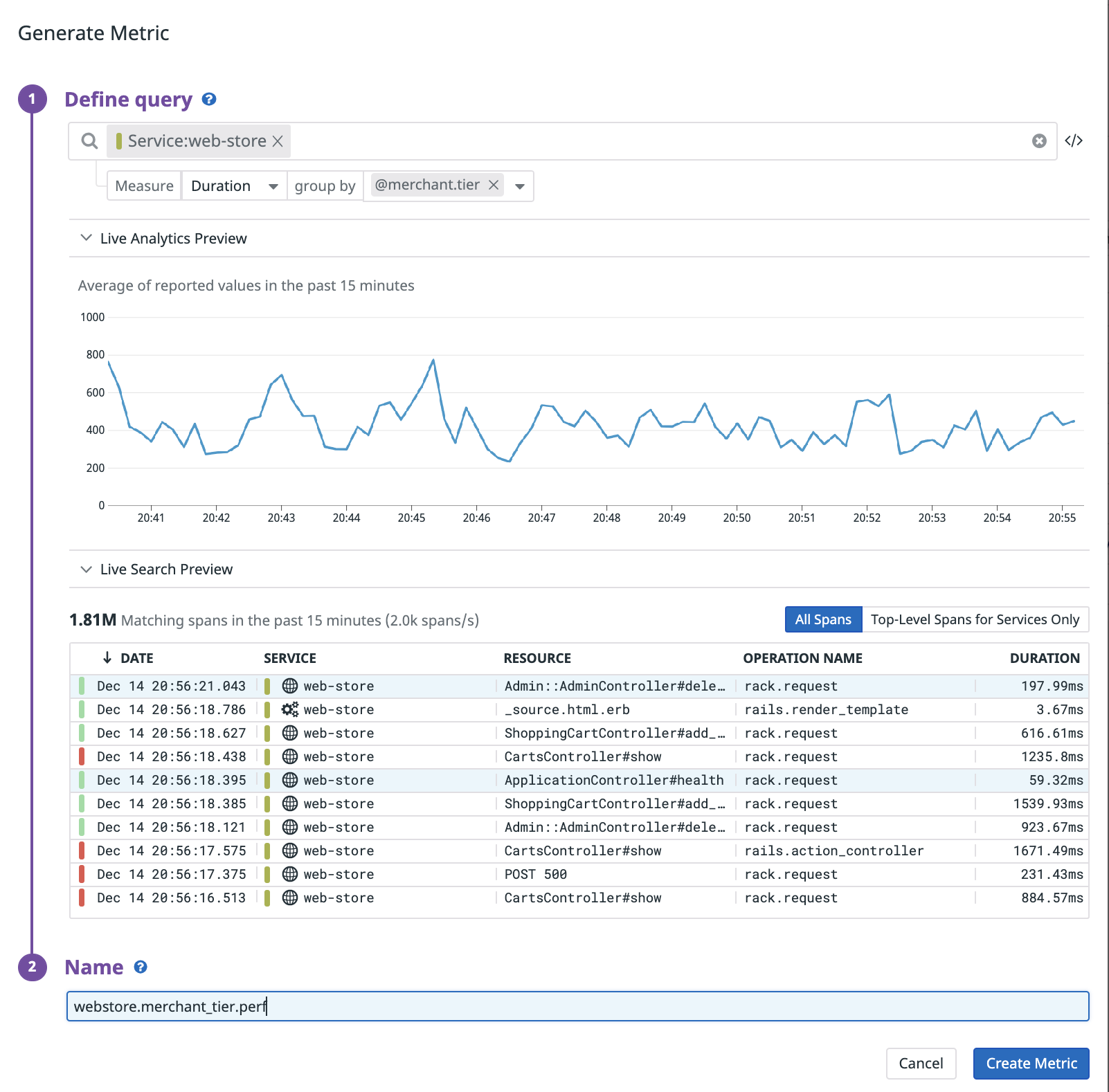- Essentials
- Getting Started
- Datadog
- Datadog Site
- DevSecOps
- Serverless for AWS Lambda
- Agent
- Integrations
- Containers
- Dashboards
- Monitors
- Logs
- APM Tracing
- Profiler
- Tags
- API
- Service Catalog
- Session Replay
- Continuous Testing
- Synthetic Monitoring
- Incident Management
- Database Monitoring
- Cloud Security Management
- Cloud SIEM
- Application Security Management
- Workflow Automation
- CI Visibility
- Test Visibility
- Test Impact Analysis
- Code Analysis
- Learning Center
- Support
- Glossary
- Standard Attributes
- Guides
- Agent
- Integrations
- OpenTelemetry
- Developers
- Authorization
- DogStatsD
- Custom Checks
- Integrations
- Create an Agent-based Integration
- Create an API Integration
- Create a Log Pipeline
- Integration Assets Reference
- Build a Marketplace Offering
- Create a Tile
- Create an Integration Dashboard
- Create a Recommended Monitor
- Create a Cloud SIEM Detection Rule
- OAuth for Integrations
- Install Agent Integration Developer Tool
- Service Checks
- IDE Plugins
- Community
- Guides
- API
- Datadog Mobile App
- CoScreen
- Cloudcraft
- In The App
- Dashboards
- Notebooks
- DDSQL Editor
- Sheets
- Monitors and Alerting
- Infrastructure
- Metrics
- Watchdog
- Bits AI
- Service Catalog
- API Catalog
- Error Tracking
- Service Management
- Infrastructure
- Application Performance
- APM
- Continuous Profiler
- Database Monitoring
- Data Streams Monitoring
- Data Jobs Monitoring
- Digital Experience
- Real User Monitoring
- Product Analytics
- Synthetic Testing and Monitoring
- Continuous Testing
- Software Delivery
- CI Visibility
- CD Visibility
- Test Optimization
- Code Analysis
- Quality Gates
- DORA Metrics
- Security
- Security Overview
- Cloud SIEM
- Cloud Security Management
- Application Security Management
- AI Observability
- Log Management
- Observability Pipelines
- Log Management
- Administration
Generate Metrics from Spans
Generate metrics from 100% of ingested spans, regardless of whether the spans are indexed by a retention filter.
Use custom metrics for specific fixed queries and comparisons, while creating retention filters to allow arbitrary querying and investigation of the retained trace and its flame graph.
Billing Note: Metrics created from ingested spans are billed as Custom Metrics.
For example, you may want to use custom metrics to visualize anomalies, create dashboards and monitors, and see trends across any parameters that are important to your business context. All generated metrics are available for 15 months as Datadog custom metrics.
| Reason | Custom Metrics Generated from Spans | Retention Filters |
|---|---|---|
| Retention Period | 15 months | 15 days |
| Anomaly Detection | Create an Anomaly Monitor based on generated metrics. | Use Analytics to compare behavior over the past 15 days, and view complete traces to investigate root cause. |
| Investigation of matching traces with full context | N/A - Custom Metrics do not result in any retention of associated traces. | Keep exactly the traces relevant to your business context with retention filters. |
| Granularity of behavior | Create custom metrics for important endpoints or other low-cardinality groups. | Use Trace Explorer for specific endpoints, or use the ‘Group By’ option in Analytics. |
| Forecasting or complex mathematics | Create a Forecast monitor based on generated metrics. | N/A |
To generate metrics from spans, on the APM Setup and Configuration page select the Generate Metrics tab, and click the New Metric button.
Creating a span-based metric
Define the metric query: Start by adding a query for filtering to your required dataset. The query syntax is the same as APM Search and Analytics.
Define the field you want to track: Select
*to generate a count of all spans matching your query or enter an attribute (for example,@cassandra_row_count) to aggregate a numeric value and create its corresponding count, minimum, maximum, sum, and average aggregated metrics. If the attribute type is a measure, the value of the metric is the value of the span attribute.Note: Span attributes that are not numerical values cannot be used for aggregation. To generate a metric that counts the distinct values of a span attribute (for instance count the number of user IDs hitting a specific endpoint), add this dimension to the
group byselector, and use thecount_nonzerofunction to count the number of tag values.Specify the group-by dimension: By default, metrics generated from spans will not have any tags unless explicitly added. Any attribute or tag that exists in your spans can be used to create metric tags.
Check the Live Analytics and Search Query preview: You can view the impact of your query in real-time on the data visualization, and the matching spans considered for your query in a live preview.
Name your metric: Metric names must follow the metric naming convention. Metric names that start with
trace.*are not permitted and will not be saved.
Span-based metrics are considered custom metrics and billed accordingly. Avoid grouping by unbounded or extremely high cardinality attributes like timestamps, user IDs, request IDs, or session IDs to avoid impacting your billing.
Updating existing span-based metrics
After a metric is created, only two fields can be updated:
| Field | Reason |
|---|---|
| Stream filter query | Change the set of matching spans to be aggregated into metrics. |
| Aggregation groups | Update the tags to manage the cardinality of generated metrics. |
Note: To change the metric type or name, create a new metric and delete the old one.
Further Reading
Additional helpful documentation, links, and articles:




